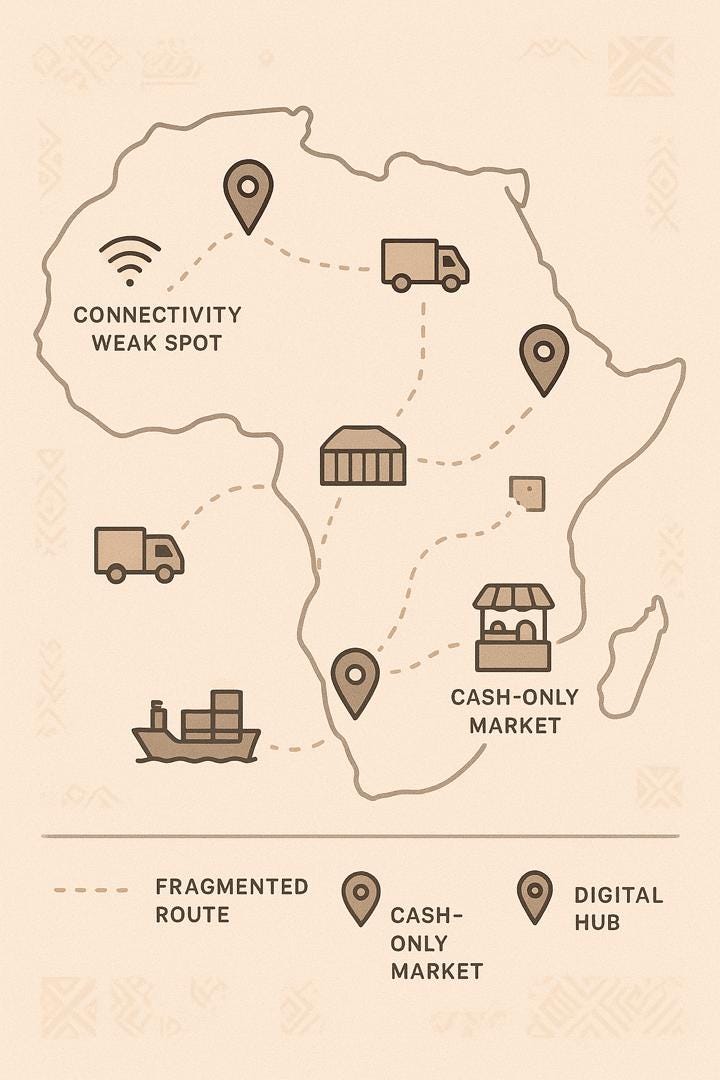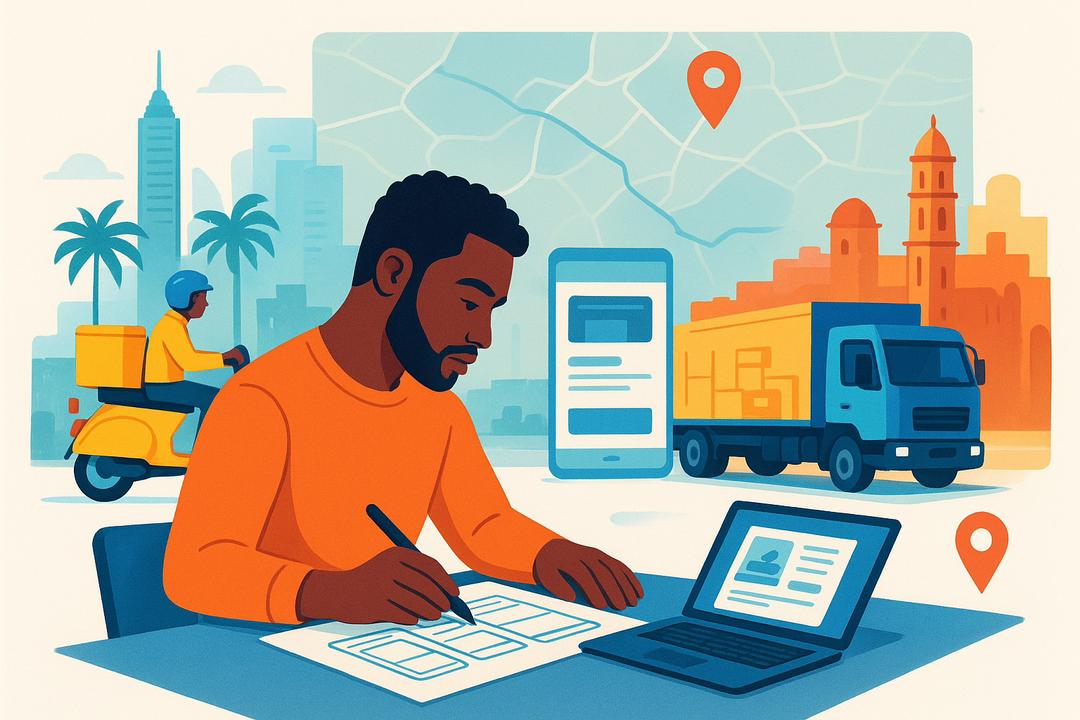Designing for African logistics platforms is more than a technical challenge. It requires sensitivity to context, creativity in constraints, and deep respect for the people who power the continent’s commerce.
In Africa’s fast-growing digital economy, logistics is one of the most complex and high-impact sectors to design for. The continent’s supply chains are vast, fragmented, and often constrained by infrastructural challenges from unpredictable delivery networks to limited address systems and digital adoption gaps. Yet, these same challenges create massive opportunities for innovation.
As a UI/UX and Product Designer who has worked on logistics and e-commerce products like Shipbubble and Sendbox, I’ve had first-hand experience designing digital solutions that simplify delivery processes and empower users to ship, track, and manage logistics across Africa’s dynamic markets.
In this article, I’ll explore how designers can create intuitive, scalable, and context-aware experiences for African logistics platforms, blending design thinking with cultural and infrastructural realities.
Post Outline
Understanding the African Logistics Landscape

Designing for logistics in Africa isn’t just about creating beautiful interfaces; it’s about designing for chaos, inconsistency, and growth. The continent’s logistics challenges are multi-layered:
- Inconsistent Address Systems: Many users don’t have precise delivery addresses. Instead, directions are shared via landmarks, phone calls, or WhatsApp messages.
- Varied Connectivity: Users often operate where internet access is patchy or expensive.
- Cash and Trust: Cash-on-delivery is still common, while digital trust is still building.
- Multiple Stakeholders: Merchants, riders, customers, and support teams all have different pain points and needs.
These observations echo findings from Logistics Challenges in Sub-Saharan Africa and Opportunities for Digitalization. MDPI Also, research like Investigating the Role of Digital Platforms in Improving Freight Logistics and Supply Chain Management in West Africa provides evidence that well-designed platforms can improve visibility, coordination, and service reliability. asric.africa
Designing for Real Users, Not Ideal Users
One of the biggest lessons I’ve learned is that African logistics users don’t always behave the way design principles predict.
For instance:
- A rider might have low literacy but high smartphone familiarity.
- A merchant might prefer WhatsApp notifications over in-app alerts.
- A customer might distrust estimated delivery times due to past experience.
As a designer, your job is to meet users where they are, not where you assume they should be.
Some design strategies that worked well for us:
- Visual-first experiences: Icons, clear visuals, and flows to simplify complex actions.
- Layered onboarding: Gradually introducing features instead of overwhelming at signup.
- Offline readiness: Ensuring functionality under limited connectivity, like SMS updates
- WhatsApp integration: Using familiar platforms to notify users of the status of their shipment
Read Also: Simplifying Complexity: Designing Multi-Carrier Shipping/Delivery Experiences in Africa
Crafting Seamless Experiences Across Devices
In many African markets, users switch frequently between mobile and desktop:
- Merchants might use desktop during business hours.
- Riders or customers may rely on mobile while on the go.
At ShipbubbleI led design for the mobile version of the web dashboard. This was not simply shrinking content; it meant rethinking flows, actions, and priorities. A mobile view needed to prioritize fast actions (Create shipment, and Track shipment), while desktop can handle batch tasks, analytics, etc.
Responsiveness is more than layout; it’s about intent.
Building Trust Through Transparency
Trust is currency in African logistics. Delays, lost packages, or complex tracking can erode trust.
Design practices that help build it:
- Clear progress/status indicators (e.g., where is the package, what’s next).
- Real-time status updates (via SMS, push, WhatsApp).
- Simple, familiar language over industry jargon.
- Visual cues (colours, icons, warnings) to signal issues or success.
By providing users with constant feedback, you convert uncertainty into confidence.
Data-Driven Design: The Next Frontier
As platforms mature, data becomes crucial for scaling and improving.
AI and analytics‐based design possibilities include:
- Route optimization based on real-time location data.
- Predictive alerts (e.g., likely delays) so users can plan.
- Dashboard insights for merchants (“Your delivery rate improved by X% this week”).
- Personalizing features based on user behaviour, region, or delivery patterns.
These tie in with findings in Logistics Challenges in Sub-Saharan Africa and Opportunities for Digitalization, which highlight both opportunities and current limitations in digital skills and infrastructure. MDPI
Looking Ahead: Designing for Impact
There are clear signals that logistics platforms in Africa are entering a stage of accelerated growth:
- Market rankings like the 2024 Agility Emerging Markets Logistics Index show which countries are improving in readiness, infrastructure, business climate, and digitalization. africasupplychainmag.com
- Startups like Shipbubble, GIG Logistics, Kobo360, MAX.NG, etc., are already pushing innovation in matching, tracking, and operations. orepulse.com
For designers, this is a chance to lead: to build platforms that are not only efficient, but human-centred, culturally aware, and resilient.
Conclusion
Designing for African logistics platforms is more than a technical challenge. It requires sensitivity to context, creativity in constraints, and deep respect for the people who power the continent’s commerce.
By working with empathy, iterating with real users, designing for trust and transparency, and using data wisely, we can build logistics platforms that don’t just move goods, they move economies forward.
Read Also: Wireframe: An essential part of design process
